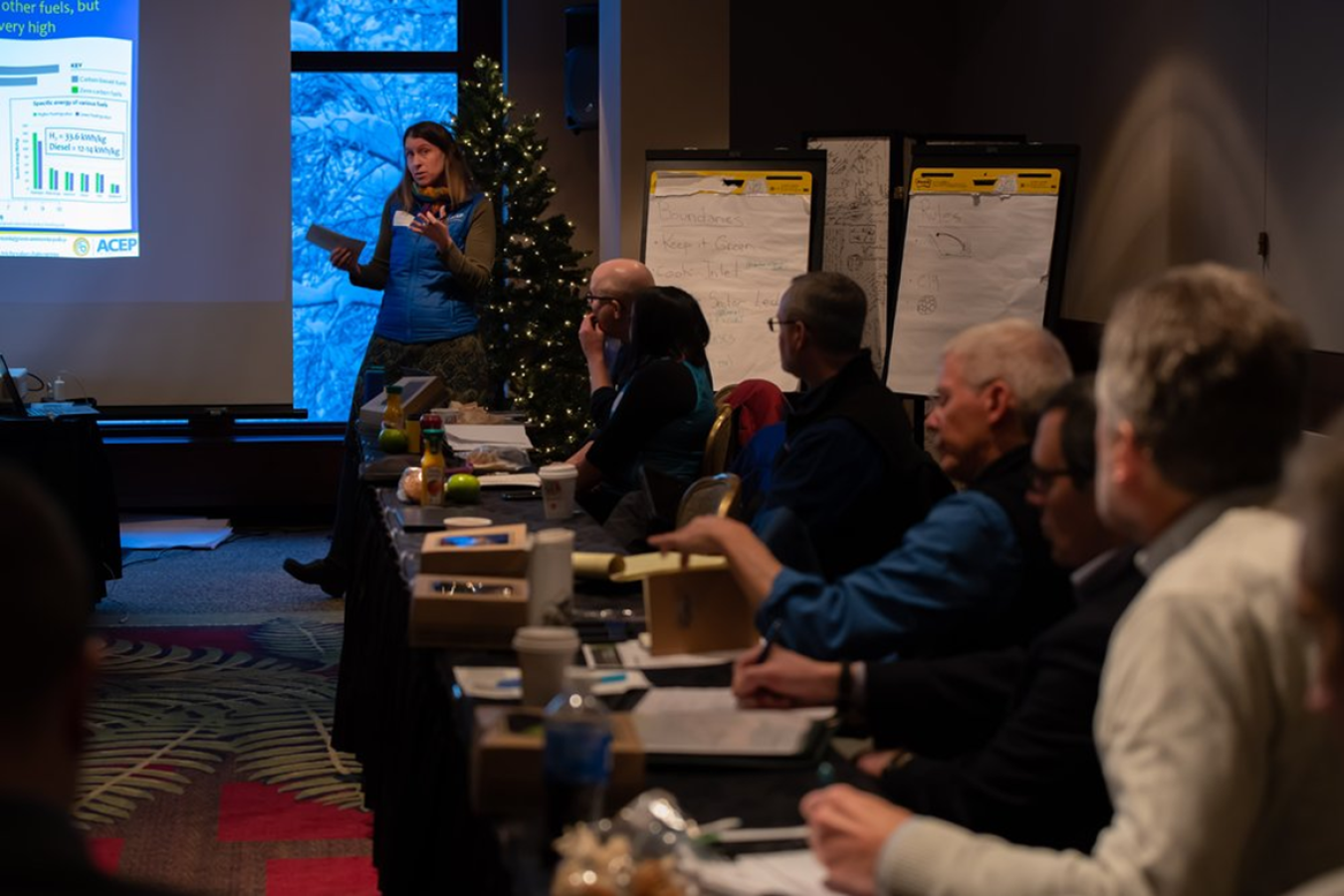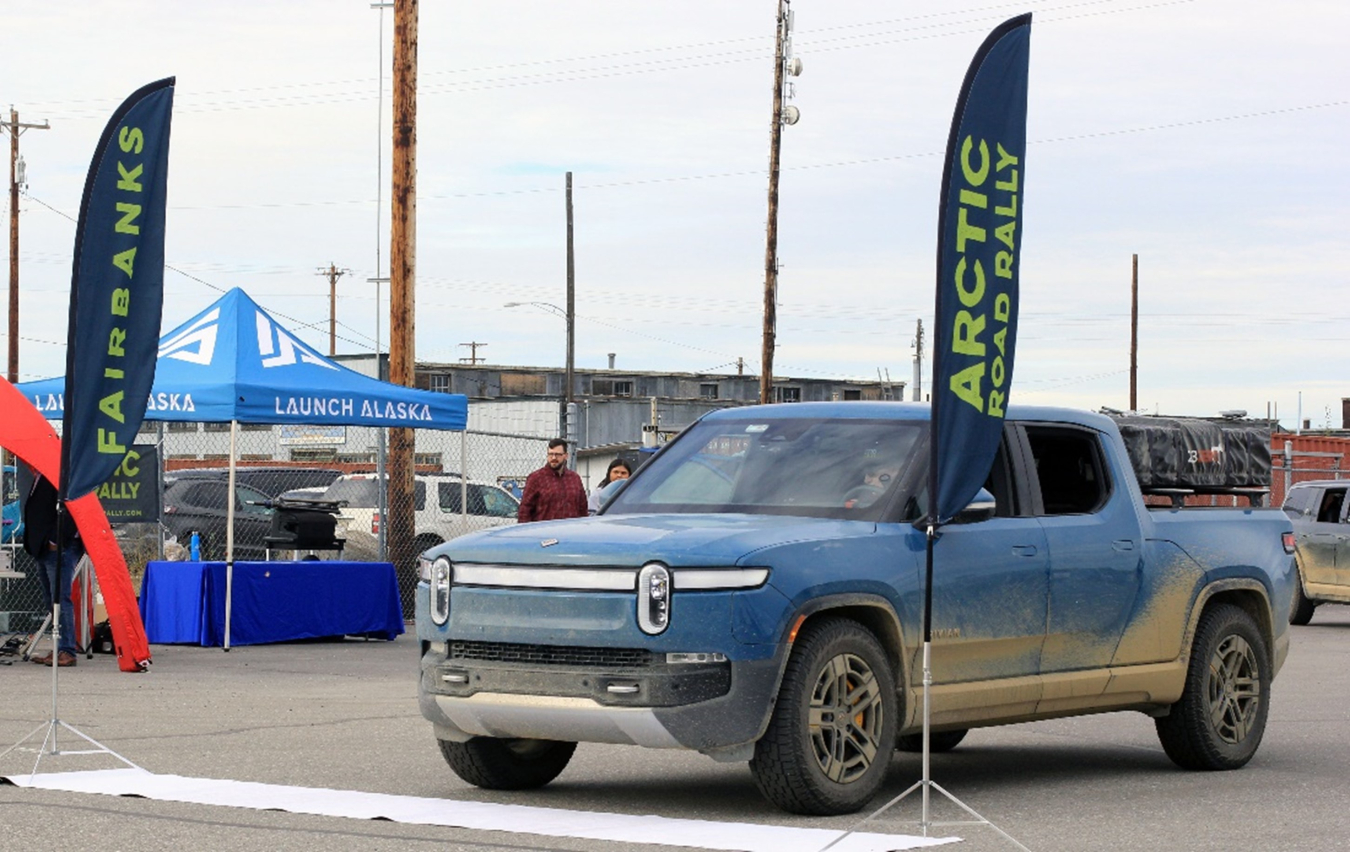Launch Alaska is a nonprofit accelerator that was awarded over $800,000 through the Office of Technology Transitions’ (OTT) Energy Program for Innovation Clusters (EPIC) program.
Office of Technology Transitions
October 25, 2023Energy Program Innovation Clusters Success Story
Introduction
Launch Alaska is a nonprofit accelerator focused on the deployment of technologies that can decarbonize systems of energy, transportation, and industry in Alaska. In 2021, they were awarded over $800,000 through the Office of Technology Transitions’ (OTT) Energy Program for Innovation Clusters (EPIC) program in collaboration with the Arctic Energy Office to launch the transportation vertical of their Tech Deployment Track accelerator. Through this funding, Launch Alaska’s Tech Deployment Track has supported an additional 14 transportation related companies as they develop and deploy solutions, from electric outboard boat motors to hydrogen powered aviation, for Alaska’s unique market environment and physical conditions. Overall, the Launch Alaska Portfolio currently contains 32 companies that have helped reduce 137,000 metric tons of carbon dioxide equivalent (CO2e) from the products or services they’ve sold. Additionally, these companies have created an additional 60 new jobs and 78% of these companies have an executive team member from a traditionally excluded demographic.
We connect with Penny Gage (PG), Launch Alaska Managing Director, and Tim Leach (TL), Launch Alaska Transportation Lead, about how the EPIC funding has allowed the team to better support their companies.
OTT: Tell us more about Launch Alaska and the focus of your work.
PG: Launch Alaska is a nonprofit that started in 2016, initially as a group of volunteers that saw the need for an accelerator. Over the years, our focus has shifted toward climate tech where we focus on three verticals: energy, transportation, and industry. We selected those verticals because they're not only some of our biggest economic sectors, but also the biggest sources of emissions in Alaska. Our broad organizational goal is to support the deployment of a billion dollars of climate projects across the state by 2030. The whole focus of our accelerator program, which is called the Tech Deployment Track, is to deploy projects to get climate tech into our communities in those three sectors to lower emissions and to transition Alaska's economy.
OTT: What did the EPIC funding allow Launch Alaska to achieve?
TL: Working with OTT’s EPIC and the Arctic Energy Office has been absolutely critical in our expansion into the transportation vertical. Before EPIC, we had 2 transportation related companies participating in the Tech Deployment Track, but we were able to double that number last year and again this year, so this current cohort has 8 transportation related companies that we’re able to support. We have also been able to scale up our programming around educational activities and business development support even after these teams graduate from our program. We're able to do things like pair them with asset owners, help create project concepts, and move these teams towards funding and contracts.

OTT: Tell us more about some of the unique aspects of deploying solutions in Alaska and how the Tech Deployment Track helps startups do business in Alaska.
PG: Alaska has unique conditions – more coastlines than the rest of the US combined, extensive wind and geothermal resources, huge temperature extremes, and high cost of energy and heating. These are just a few of the challenges and opportunities that climate tech can help solve.
In addition, something like 86% of our communities are located off the road system, which means they are only accessible by boat or plane. There are logistical, financial, and complexity challenges when you’re trying to deploy in some of these smaller, more rural communities. So, when companies come through our program, we do work to help them understand the history of climate tech deployment in our state and what it means to be good community partners to these smaller communities. Similarly, there is an education component around federally recognized tribes and Alaska Native corporations, which is a model that doesn’t exist elsewhere in the U.S.
TL: On the transportation side, our geographic position means we’re at a crossroads for global transit. We have the third busiest cargo hub on the planet at Ted Stevens Anchorage International because freight providers will stop and refuel here rather than make that transpacific flight directly. As a result, we have a huge footprint on the emissions side, and we need to build infrastructure and plan policy thoughtfully around these technology solutions if we want to move the globe towards decarbonized transportation.

OTT: Looking forward, what does your team hope to accomplish?
TL: We’ll continue our work this winter around supporting companies on different demonstration projects, from aviation demonstration for hydrogen to micro-mobility electric vehicle demonstrations with snow machines, ATVs, and side by sides to figure out if these are appropriate technologies as they exist today. And as they’re being commercialized in the next two years, we want to make sure that this technology is truly designed with our rural communities in mind, and not just the mass market, as often these solutions might be the only transportation for them to participate in subsistence activities and get their groceries. And the importance of these demonstrations is something we hear again and again from industry – they’re not going to invest if it’s not proven yet. And through our work, Launch Alaska can really move the market in that direction.
The Energy Program for Innovation Clusters (EPIC) Prize recognizes the nation's most innovative incubators. Sponsored by the U.S. Department of Energy Office of Technology Transitions (OTT), the EPIC Prize awards cash prizes to regional incubator teams that submit the most creative and impactful plans, then implement those plans to develop strong clusters, connections, and support for energy startups and entrepreneurs. To learn more, visit Energy Program for Innovation Clusters | Department of Energy.
To learn more about Launch Alaska and the Tech Deployment Track, please visit Launch Alaska.

